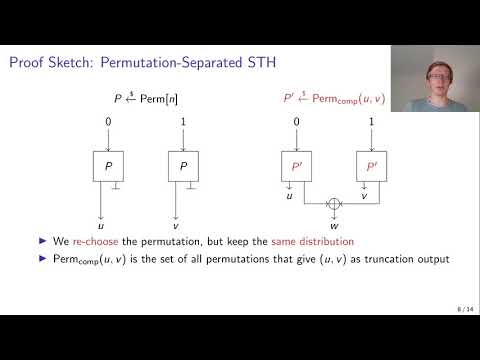CryptoDB
The Summation-Truncation Hybrid: Reusing Discarded Bits for Free
| Authors: |
|
|---|---|
| Download: |
|
| Presentation: | Slides |
| Conference: | CRYPTO 2020 |
| Abstract: | A well-established PRP-to-PRF conversion design is truncation: one evaluates an |
Video from CRYPTO 2020
BibTeX
@inproceedings{crypto-2020-30433,
title={The Summation-Truncation Hybrid: Reusing Discarded Bits for Free},
publisher={Springer-Verlag},
doi={10.1007/978-3-030-56784-2_7},
author={Aldo Gunsing and Bart Mennink},
year=2020
}

